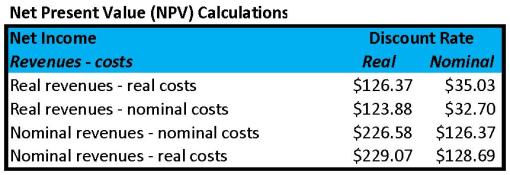Land consultant and writer Curtis Seltzer interviewed me on the topic of timberland investing and financial analysis. One question in particular got to the heart of how I think about applying finance to forestry-related investment decisions:
“Do you use or recommend a general valuation formula for determining which investments to make, such as x% of acquisition cost in merchantable timber or a projected 10-year pay off of acquisition cost? When using DCF analysis, what minimum target do you use? Do you have non-revenue hurdles against which you measure timberland investment performance?”
Short answer: “No.”
Longer answer: “In supporting valuation work, we focus on two things. First, we clarify, possibly to the point of annoyance, the priorities of the investor. Being specific on this point is critical to any valuation efforts as it affects assumptions, investment periods and negotiations. For example, a client whose objective is to own forestlands solely from a “maximizing long-term returns” perspective differs from maximizing annual cash flows which differs from clients who own forests to help source a wood-using mill or bioenergy project to clients who prioritize recreational potential…..Second, we attempt to “know what’s knowable” with respect to data for the DCF model, local wood markets, and client hurdle rates. We have the opportunity to review valuation models from a range of investors and analysts and find that, typically, ~30% have a math or Excel error, and most have made assumptions about costs, volumes or prices that could be strengthened with minimal work. So, in the DCF, we want, to the extent possible, “know what’s knowable” and get it right relative to the investor’s priorities. If we’re not clear on what the investor values, the DCF can provide a valuation inconsistent with the true ownership objectives.”
To read the complete interview with Curtis, please click here.
Our upcoming “Applied Forest Finance” course in Atlanta on August 4, 2010 teaches practical tools and strategies for applying financial analysis and criteria to forestry and timberland-related investments. For course information, please click here.


